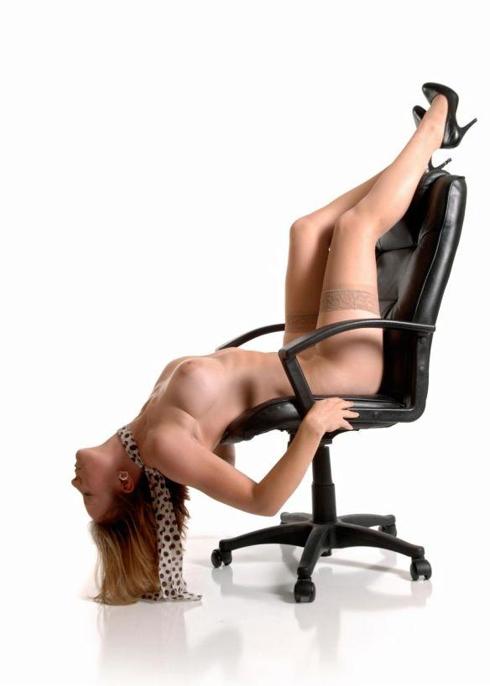Lights, Camera... Nude!: A Guide to Lighting the Female Nude for Photography (12 page)
Read Lights, Camera... Nude!: A Guide to Lighting the Female Nude for Photography Online
Authors: A. K. Nicholas

Light #3
:
A backlight is placed about two feet off the ground aimed down at the head.
Light #4:
A backlight about four feet high is aimed at the feet.
Light #5:
A striplight softbox backlights the edge of the model. The softbox is oriented vertically to match the model’s position.
Light #6
: A 24-inch by 24-inch softbox is on the floor and aimed up at the model’s legs. A fabric grid controls the light output. Bean bags are used to position and aim the softbox.
Setup Tip: Place the backlight on the floor, then feed the cord through a hole cut in the background paper. Set the light on a bean bag instead of a light stand to steady it as low as possible.
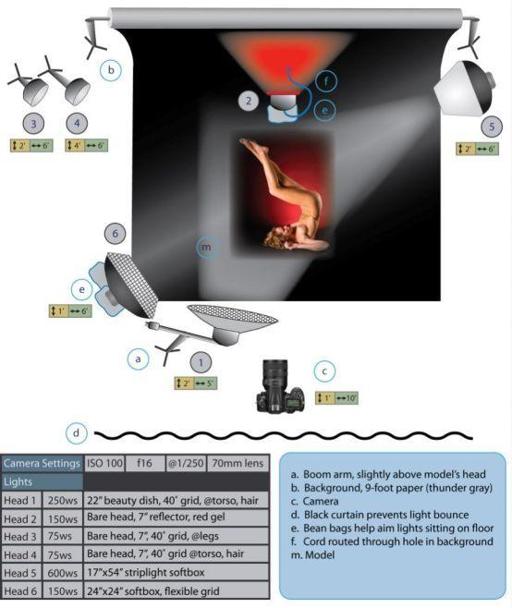
Lighting Diagram 11: Gelled backlight
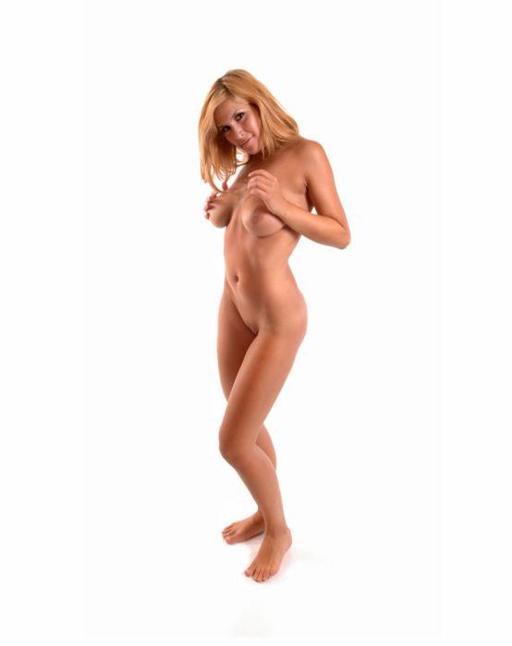
Model: Tarra J.
Lighting Setup
s
#
12, 13
Category:
Isolation
Skill: Challenging
Light Kit:4
Heads:6
Model Zone:
Large
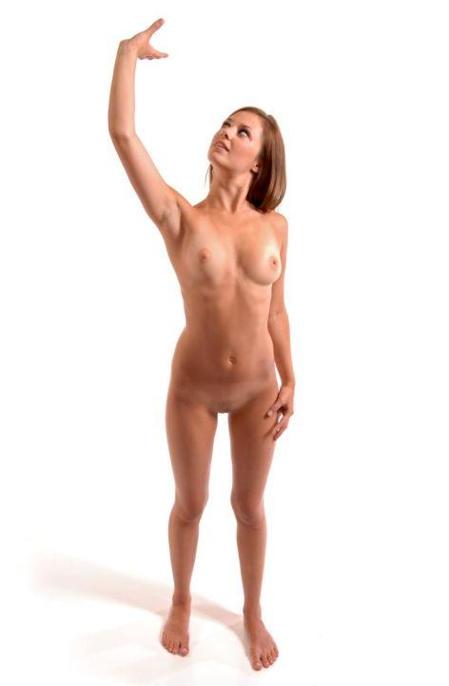
Photo 54: isolation
Model: Michelle W.
If you’ve tried to shoot for microstock, you’ve probably wondered how to isolate a model on a white background. There are a few keys to doing this: have plenty of background lights, use glossy white tile board under the model, and don’t overpower the background lights.
The key to even coverage of background light is not a lot of
light
, but a lot of
lights
. In other words, several weak background lights give more even coverage than one very strong light. You should have at least four background lights, and they should be diffused. You can diffuse the lights with softboxes, umbrellas, or any diffuser you want. The idea is to spread the light evenly over the background. Only turn the background lights bright enough to make it white around the edges of the model.
With sufficient coverage, overexposure of the background is unnecessary. Excessive background light will bounce around your studio and wash out the shot, cause chromatic aberration, and other problems. You can dodge out any gray corners during post-processing.
I use a roll of nine-foot wide white background paper. White tile board, the material that is used to simulate tile on bathroom walls, can be placed under the model to make a reflective surface. You want the non-embossed, semi-gloss tile board. It’s available from home improvement stores in 4 x 8-foot sheets for less than the cost of a roll of background paper. Tile board is resistant to stains and scratches, and is easy to clean. White Plexiglas is a beautiful but expensive option.
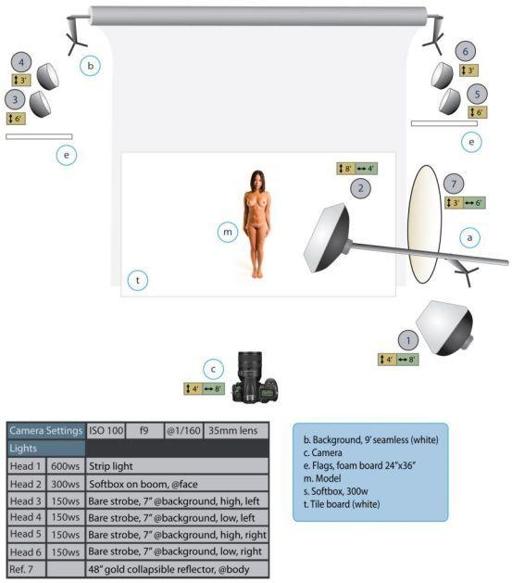
Lighting Diagram 12: Isolation with white tile board
Photo 55: Isolation on white
The model is lit from one side by a strip softbox and a softbox on a boom. A collapsible 48-inch gold reflector adds a little color to her skin. No fill light is needed due to the white background and the white studio walls and ceiling bouncing light all over the place. Four lights are used to illuminate the background, which is reflected by the tile board under the model’s feet. A foam board flag on each side of the background prevents direct light from the lights from hitting the lens.
These images illustrate the purpose of each set of lights by selectively firing only some lights in each shot.
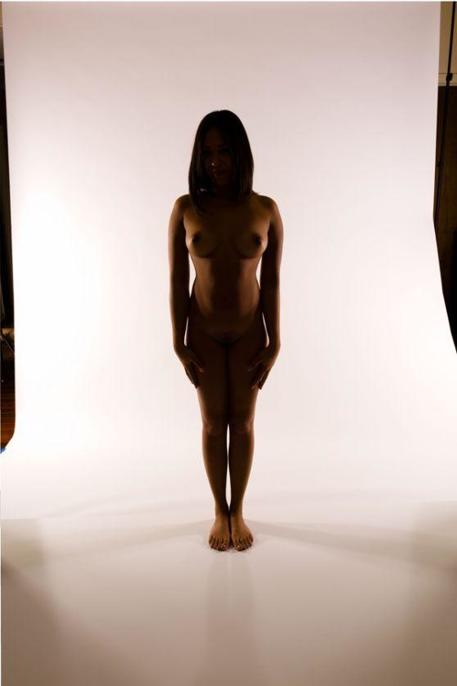 Photo 56: Background lights only
Photo 56: Background lights only
In
InPhoto 56only the background lightsare on. Notice that there is not enough light to completely bleach the background white, the shadows projected forward by the backlights, and the reflection of the modelunder her in the tile board.
only the background lights are on. Notice that there is not enough light to completely bleach the background white, the shadows projected forward by the backlights, and the reflection of the model under her in the tile board.
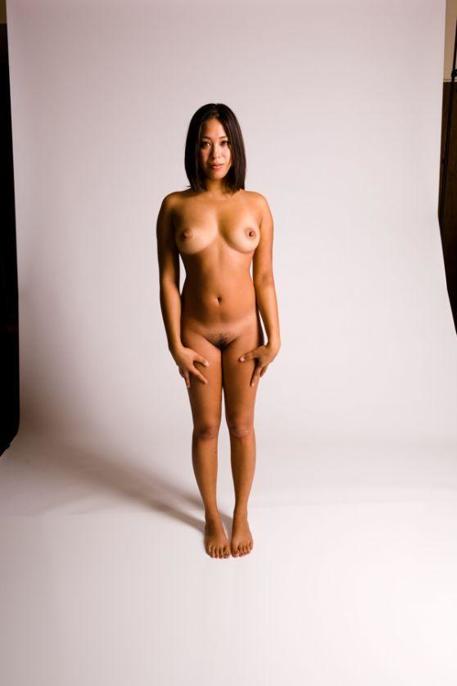
Photo 57: Main lights only
In
InPhoto 57the main lights are on, but not the background lights. Still, enough light spills onto the background to turn it a middle shade of gray.
the main lights are on, but not the background lights. Still, enough light spills onto the background to turn it a middle shade of gray.
Model: Jacqueline C.
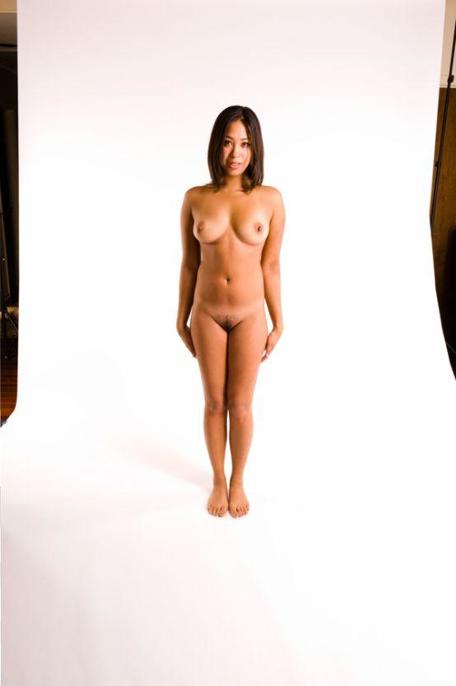
Photo 58: All lights
With all lights on in
With all lights on in Photo 58,the background turns white and the floor shadowsbegin to disappear.
, the background turns white and the floor shadows begin to disappear.
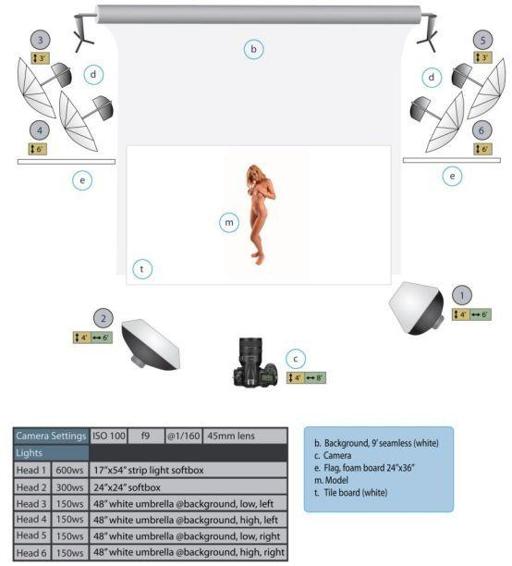
Lighting Diagram 13: Isolation on white with background umbrellas
